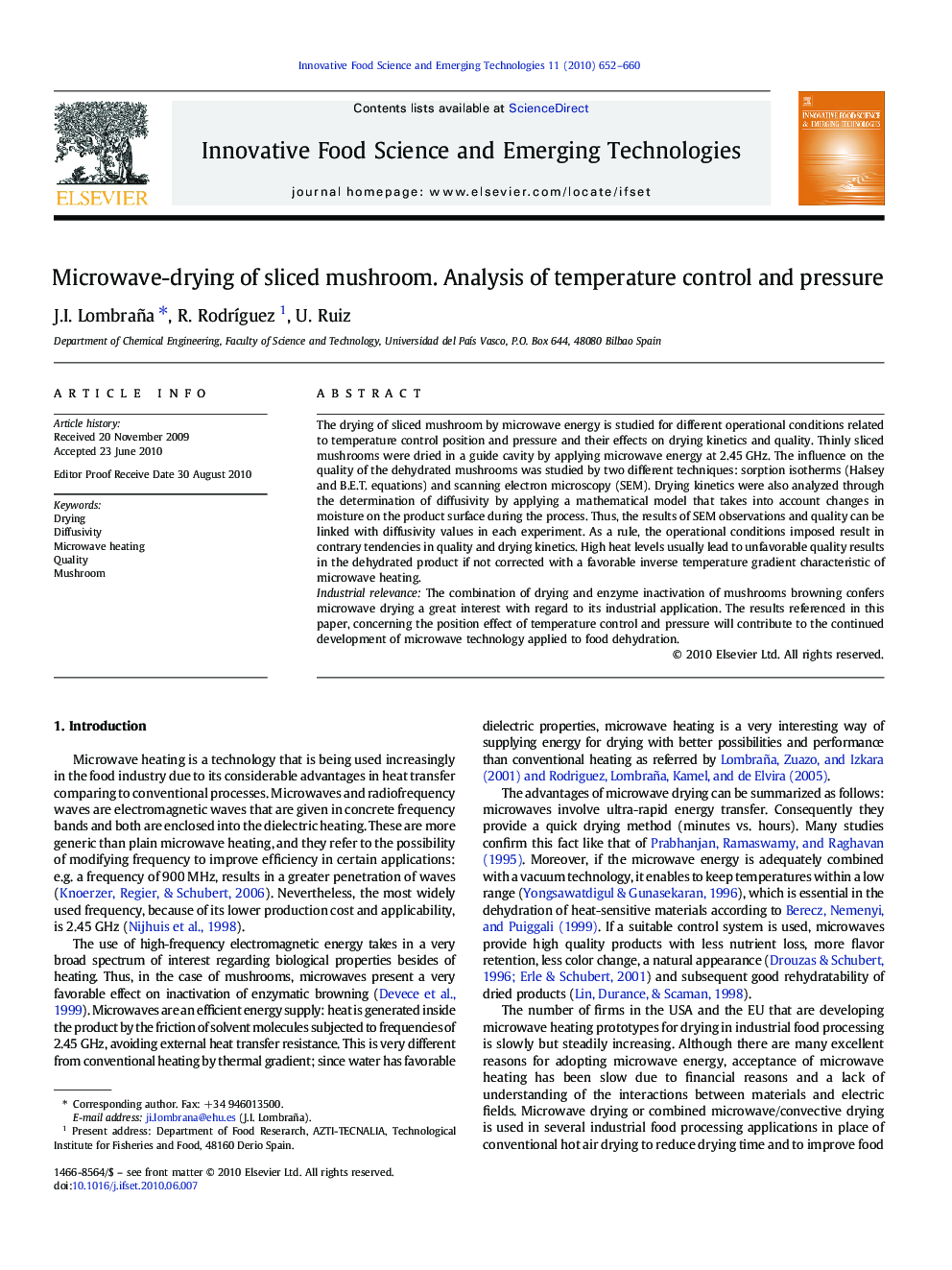| Article ID | Journal | Published Year | Pages | File Type |
|---|---|---|---|---|
| 2087555 | Innovative Food Science & Emerging Technologies | 2010 | 9 Pages |
The drying of sliced mushroom by microwave energy is studied for different operational conditions related to temperature control position and pressure and their effects on drying kinetics and quality. Thinly sliced mushrooms were dried in a guide cavity by applying microwave energy at 2.45 GHz. The influence on the quality of the dehydrated mushrooms was studied by two different techniques: sorption isotherms (Halsey and B.E.T. equations) and scanning electron microscopy (SEM). Drying kinetics were also analyzed through the determination of diffusivity by applying a mathematical model that takes into account changes in moisture on the product surface during the process. Thus, the results of SEM observations and quality can be linked with diffusivity values in each experiment. As a rule, the operational conditions imposed result in contrary tendencies in quality and drying kinetics. High heat levels usually lead to unfavorable quality results in the dehydrated product if not corrected with a favorable inverse temperature gradient characteristic of microwave heating.Industrial relevanceThe combination of drying and enzyme inactivation of mushrooms browning confers microwave drying a great interest with regard to its industrial application. The results referenced in this paper, concerning the position effect of temperature control and pressure will contribute to the continued development of microwave technology applied to food dehydration.
